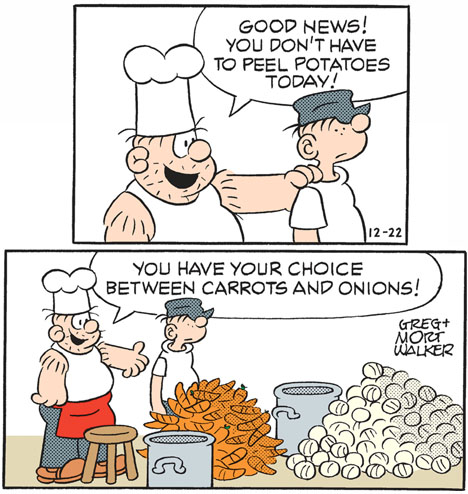
Leslie Beck wrote . . . . .
There is no better time to increase you vegetable intake than now. And it’s not a hard task, as this is the time of year when seasonal fresh produce abounds. A produce-rich diet is associated with a lower risk of high blood pressure, heart attack, stroke, cataract, macular degeneration, cognitive decline and digestive-tract cancers.
Eating local produce has nutritional advantages. Locally grown vegetables (and fruit) have a higher nutritional quality than out-of-season vegetables shipped to supermarkets over far distances. They’re usually sold 24 hours after harvest, at their peak ripeness and nutrient content. Studies have shown the vitamin C content of red peppers and tomatoes, for example, is higher when they’re picked ripe.
Vegetables and fruit grown for far-away markets are often harvested as early as possible (before reaching full nutritional quality) to withstand damage from mechanical harvesting and transport. Produce that spends considerable time on the road also has more time to lose nutrients before reaching the grocery store. As well, farmers growing for a local market choose plant varieties that favour taste and nutrition over shipability.
I advise my clients to eat at least four cups of vegetables a day – and a variety of them – to increase their intake of vitamins, minerals, antioxidants and fibre. That said, there are some summer vegetables that deserve a special mention when it comes to their unique nutrient content. Here are my top five summer picks, for June through September.
Asparagus
Available until the end of June in most parts of the country, asparagus is a nutritional powerhouse. It’s high in fibre, vitamin A, vitamin B6, thiamine (B1), vitamin K and potassium and contains a unique combination of anti-inflammatory phytochemicals.
Its claim to fame, though, is folate, a B vitamin that helps in the formation of red blood cells and keeps the DNA of our cells in good repair. One serving of asparagus (1/2 cup or six spears) delivers one-third of a day’s worth of folate (adults need 400 micrograms daily). Not bad for only 20 calories.
Enjoy asparagus grilled on the barbecue; drizzle with olive oil and sprinkle with coarse sea salt. Save leftover grilled asparagus for sandwiches and salads.
Cauliflower
In season for most of the summer, this cruciferous vegetable has far more nutrition to offer than its pale white colour suggests. One cup of chopped cauliflower provides 2 grams protein, 2 grams fibre, 60 micrograms of folate and more than half a day’s worth of vitamin C (51 milligrams) – all for a mere 27 calories. It’s also a good source of potassium and vitamin K.
But there’s more: Cauliflower, like broccoli, is an outstanding source of glucosinolates, phytochemicals that, once consumed, are transformed into compounds called isothiocyanates that help the liver detoxify and eliminate cancer-causing substances.
To increase the availability of cauliflower’s glucosinolates, eat it raw or lightly cooked. Toss chopped cauliflower in salads and coleslaw. Serve raw cauliflower florets as crudités. Add cauliflower to an omelette with feta cheese, baby spinach and halved cherry tomatoes.
Swiss chard
Like its popular green cousin kale, Swiss chard is hard to beat on the nutrition front. Chard delivers plenty of vitamin C, vitamin K, calcium, magnesium and potassium. And it’s packed with nitrates, natural compounds shown to lower blood pressure and reduce the amount of oxygen needed during athletic performance.
Swiss chard is also an outstanding source of lutein and zeaxanthin, phytochemicals that protect your retinas against cataract and macular degeneration. One cup of cooked chard serves up 20 milligrams of lutein and zeaxanthin. While there’s no official recommended intake for lutein or zeaxanthin, experts believe that consuming 6 mg to 15 mg a day is optimal for eye health.
Throw a handful of Swiss chard, raw or cooked, into a smoothie or protein shake. Add chard leaves, instead of lettuce, to sandwiches and wraps. Top a barbecued pizza with sautéed Swiss chard.
Sweet red peppers
Red bell peppers are actually green bell peppers that have ripened and matured on the vine, taking on a red colour and milder, sweeter taste. As they mature, red peppers also take on more antioxidants: per serving, red peppers have eight times more beta-carotene and one-third more vitamin C.
In fact, red peppers offer more immune-boosting vitamin C than most citrus fruit. One medium red pepper delivers two day’s worth (152 mg); one medium orange, while still an excellent source, has 70 mg of vitamin C. Red peppers also add B vitamins (including folate), vitamins A and E and potassium to your diet.
Eat red pepper strips with hummus, add it raw or roasted to spinach salad (its vitamin C helps your body absorb more iron from greens), or serve it grilled and drizzled with balsamic vinegar.
Eggplant
Its dominant nutrients include folate, B vitamins, vitamin A and potassium. Eggplant is also a decent source of soluble fibre, the type that helps lower LDL (bad) cholesterol in the bloodstream.
You need to eat its skin, though, to get many of eggplant’s beneficial phytochemicals. Eggplant owes its dark-purple hue to anthocyanins, antioxidants thought to play a role in preventing cardiovascular disease, cognitive decline and cancer. One particular anthocyanin in eggplant skin, called nasunin, has been shown to prevent cancer tumours from growing.
Grill thick slices of eggplant and serve them on their own or in a burger. Turn eggplant into a low-calorie, crustless pizza: Top sliced eggplant with tomato sauce, shredded cheese and your favourite toppings.
Source: The Globe and Mail
Filed under: Food, Health, News and Articles | Tagged: Veggie | Comments Off on If You’re Going to Eat Your Veggies, Make It These Five







